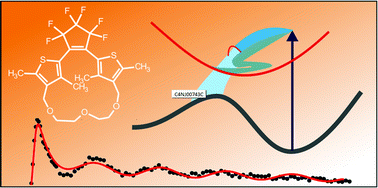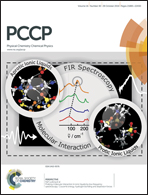Competitive direct vs. indirect photochromism dynamics of constrained inverse dithienylethene molecules†
Abstract
State-of-the-art experimental and theoretical tools were used to investigate the gas-phase relaxation dynamics of various photoexcited photochromic dithienylethene molecules in situations where several relaxation channels are simultaneously at play. Unconstrained and constrained dynamics were addressed by considering unbridged and bridged molecules with a polyether bridge of various sizes (from 2 to 4 units). Time-resolved ultrafast ionization spectroscopy techniques were used to probe the dynamics. This revealed the existence of several relaxation pathways from the first excited state to the ground-state. Characteristic times were determined for each process. These channels compete at an early stage of the dynamics only when the initial wavepacket splits into two parts. A striking excited state wavepacket oscillation is observed in bridged molecules. A general reaction mechanism is proposed which rationalizes the carbon–carbon distance rule which is widely used as an empirical tool to predict the photoactivity of photochromic molecules in crystals.


 Please wait while we load your content...
Please wait while we load your content...